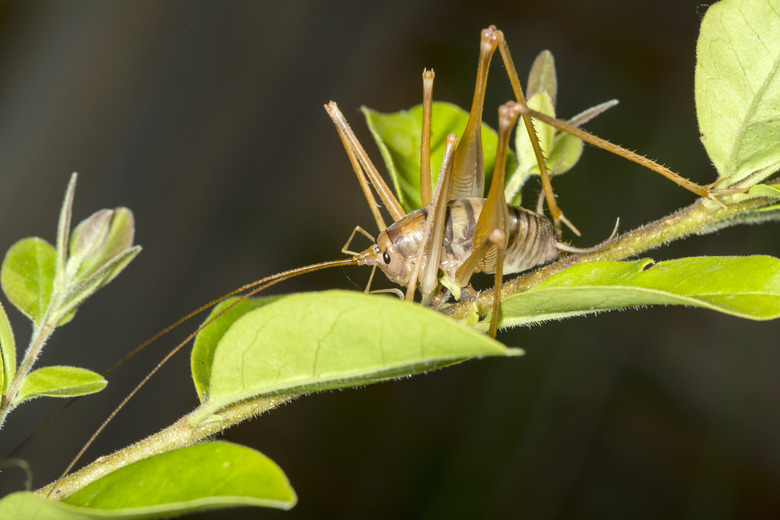What Are Spider Crickets?
You drop your glasses on the floor, and when you reach down to pick them up, a long-legged insect jumps toward your face. Unnerving, yes, but if you'd had your glasses on, you might have discovered that the insect wasn't a spider but a spider cricket. If so, you can set aside your arachnophobia and relax.
An Insect With Many Names
An Insect With Many Names
The spider cricket (Ceuthophilus spp.) belongs to the family Rhaphidophoridae, a long Latin word that tells you one important thing. It isn't the same family (Gryllidae) as that of field crickets and other chirpers. In fact, entomologists don't consider the spider cricket to be a true cricket.
People call the spider cricket by many names. The normally 3/4- to 1-inch-long insect has a single hump on its back like that of a dromedary, so to some people, it's a camel cricket or a **camelback cricket.** It likes to burrow in the ground in arid locations, and people who live there call it the **cave cricket.** Some folks simply refer to spider crickets as sprickets.
Do You Need to Be Afraid of Spider Crickets?
Do You Need to Be Afraid of Spider Crickets?
Sprickets have long legs and antennae that make them look imposing, but the brownish insects are harmless. They lack fangs, so they can't bite, and even if they could, they have no venom. If one lands on your arm, it may mistake it for food and start gnawing, but the sensation has been described as more annoying than painful. In any case, there's little chance it will stay on your arm long enough for that to happen.
You do not need to worry about chirping keeping you awake at night. The spider cricket lacks the noise-making apparatus that true crickets possess. If you hear chirping at night, it's because field crickets, house crickets or mole crickets are around.
Sprickets aren't exactly benign, and they don't make good house pets. They like to eat fabric, drywall paper, wood dust, plants and even each other. They tend to collect in large numbers, so if you have an infestation, your curtains, carpets and houseplants are in danger. They live about one or two years, so a large infestation is bound to result in a messy heap of dead insect bodies given enough time.
How to Keep Sprickets Out of the House
How to Keep Sprickets Out of the House
Like any insect, the spider cricket needs moisture, and if one or more moves into your house, it will probably live in a dark corner of the basement or a cabinet. The spider cricket mates by smell, not by sound, and reproduction is fairly efficient, so it won't take long for a large colony to develop.
The best way to prevent this from happening is to seal all small entrances in the foundation with caulk or wood filler. Spread diatomaceous earth on the ground around gaps you can't seal, such as those under doors. Keeping things dry in the house by running a fan or a dehumidifier also helps.
Dealing with Sprickets in the House
Dealing with Sprickets in the House
The usual methods of insect control all apply to sprickets, including swatting, baiting and spraying insecticides. Besides these methods, frustrated homeowners have devised some creative approaches to dealing with an existing spider cricket infestation:
- Distribute bowls of soapy water after drying out your house. The soap ensures the insects will sink.
- Make sticky traps out of tape or use sticky mouse traps. Once you catch one cricket, it will become bait for others.
- Vacuum up the ones you see and empty the bag outside.
- Add one or two Siamese cats to your family. Crickets look like toys to them.
Cite This Article
MLA
Deziel, Chris. "What Are Spider Crickets?" sciencing.com, https://www.sciencing.com/what-are-spider-crickets-13406398/. 7 March 2019.
APA
Deziel, Chris. (2019, March 7). What Are Spider Crickets?. sciencing.com. Retrieved from https://www.sciencing.com/what-are-spider-crickets-13406398/
Chicago
Deziel, Chris. What Are Spider Crickets? last modified March 24, 2022. https://www.sciencing.com/what-are-spider-crickets-13406398/
